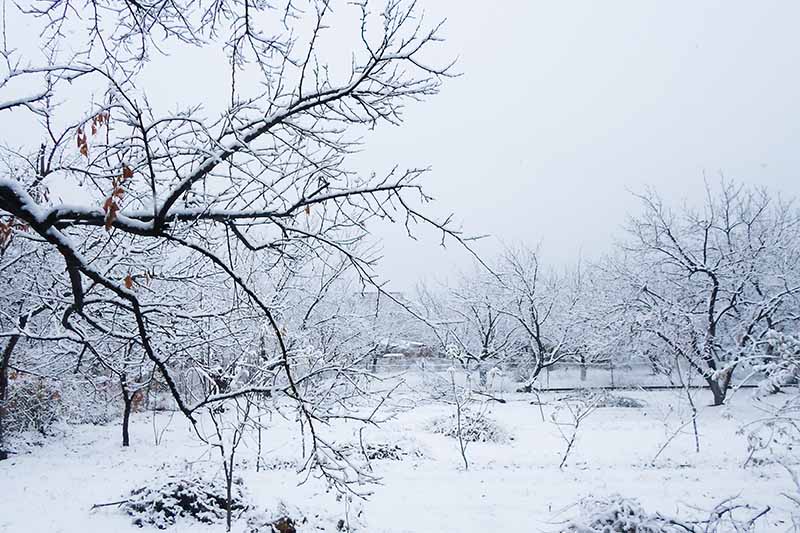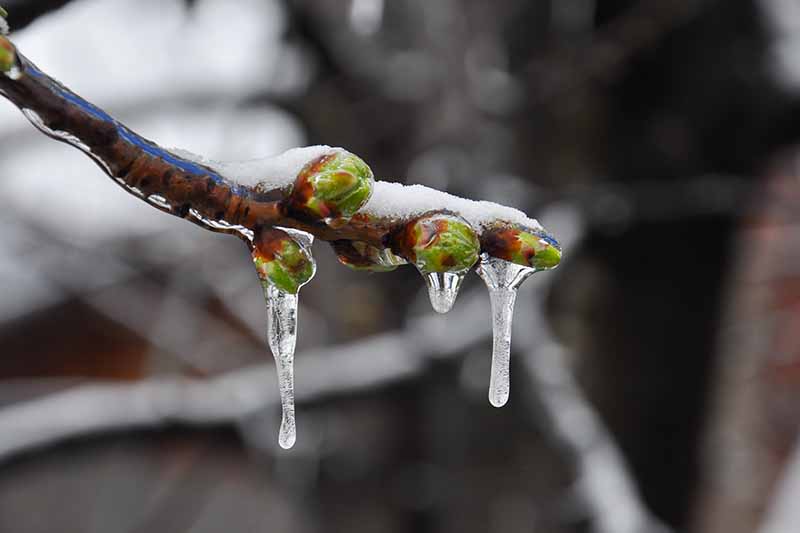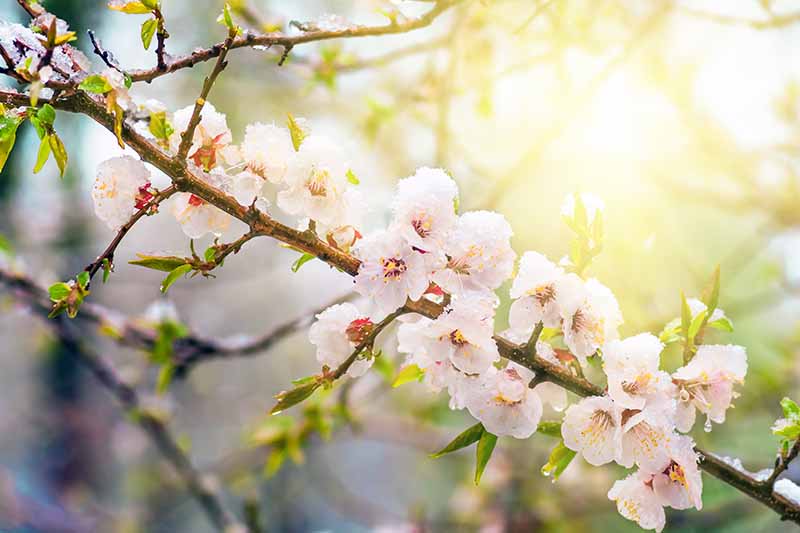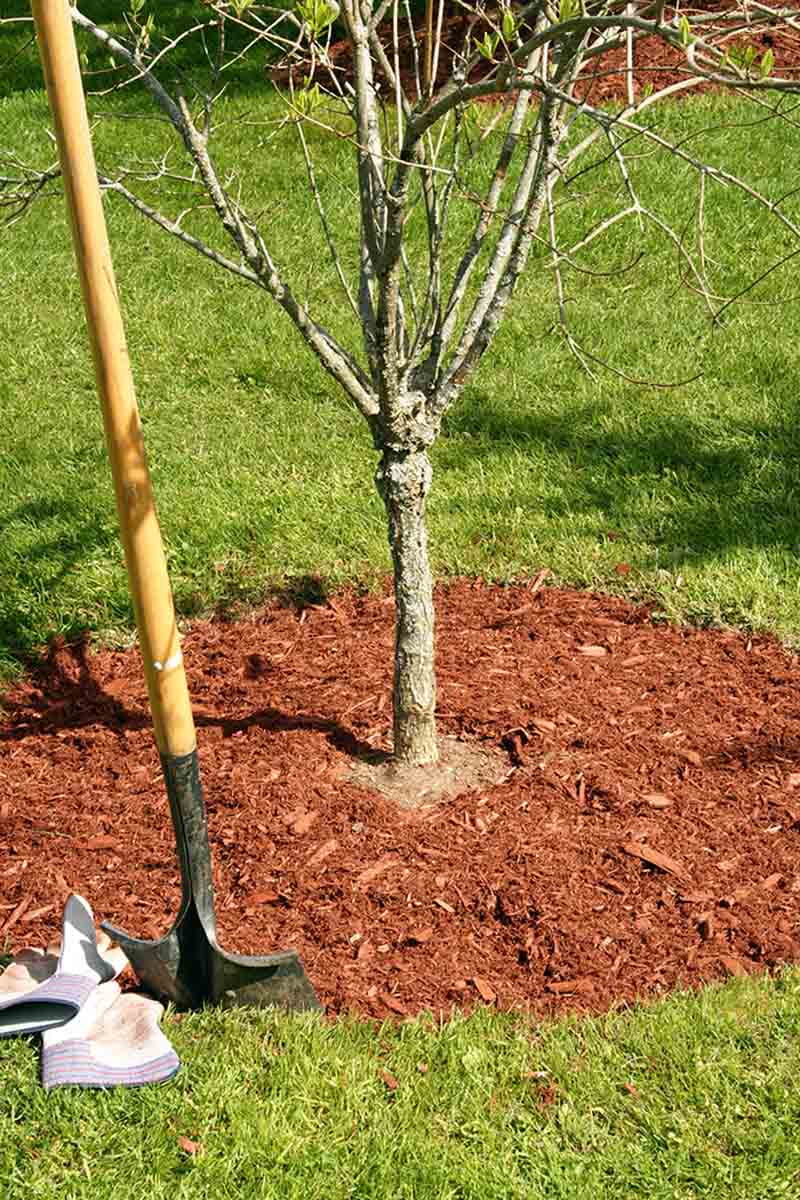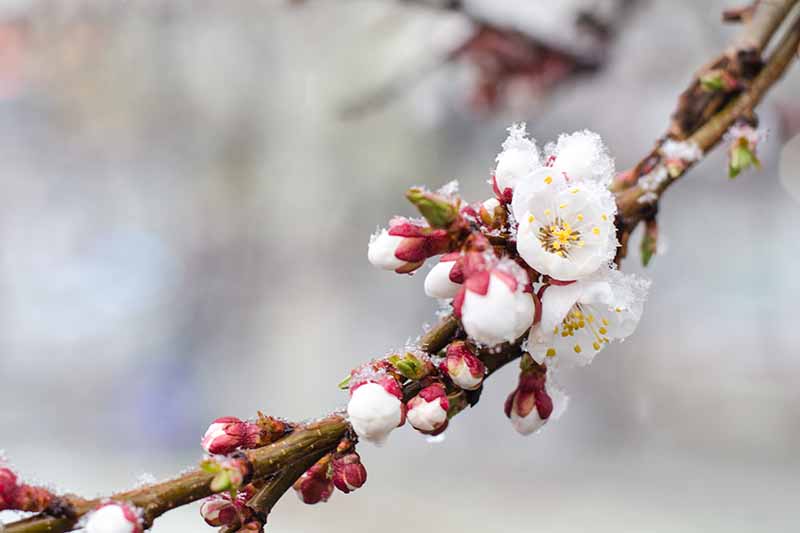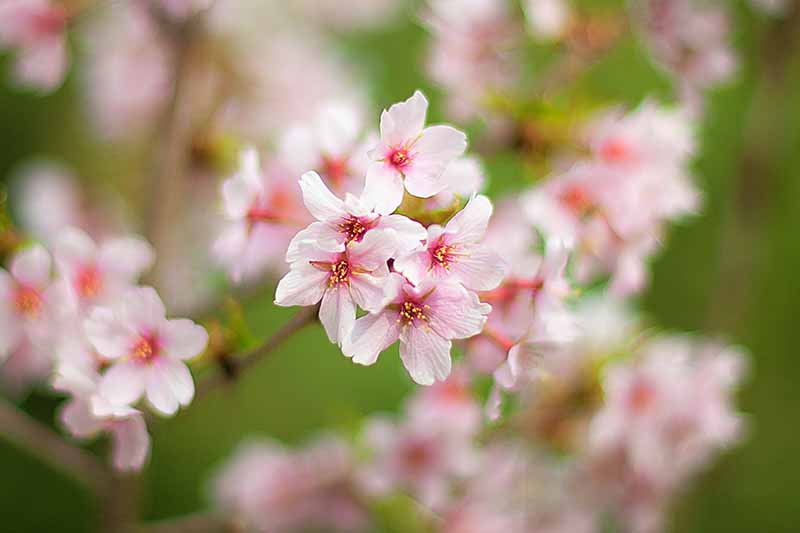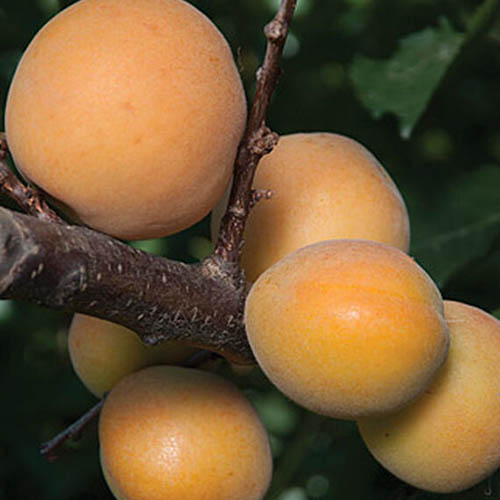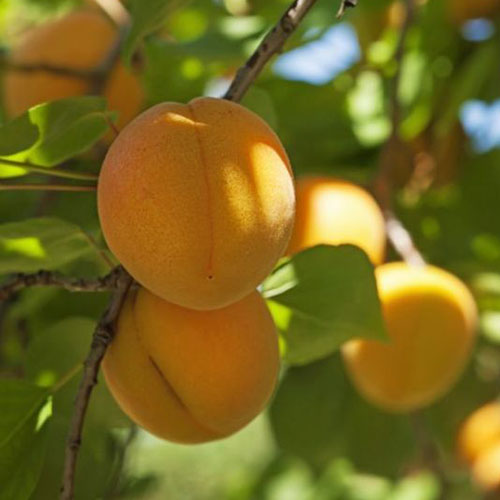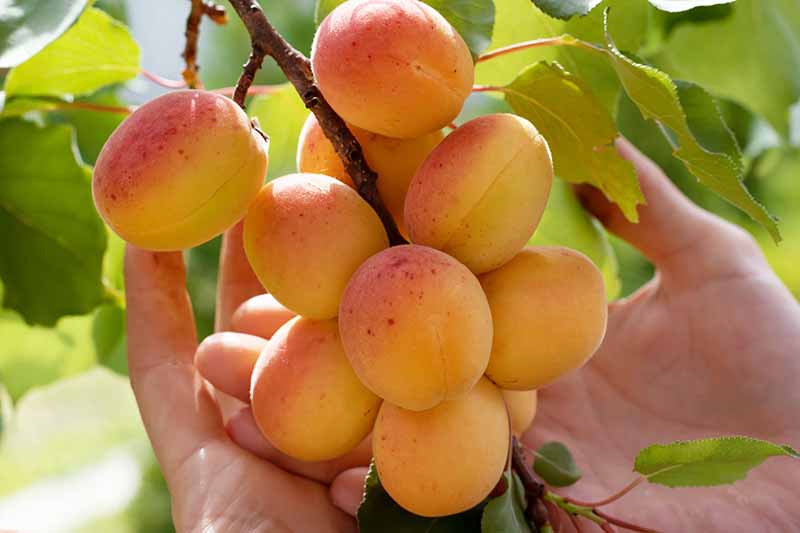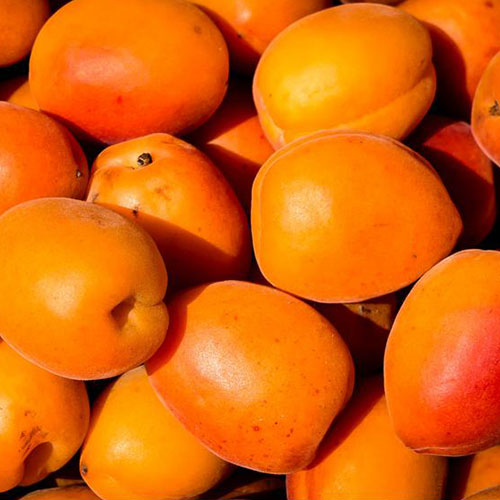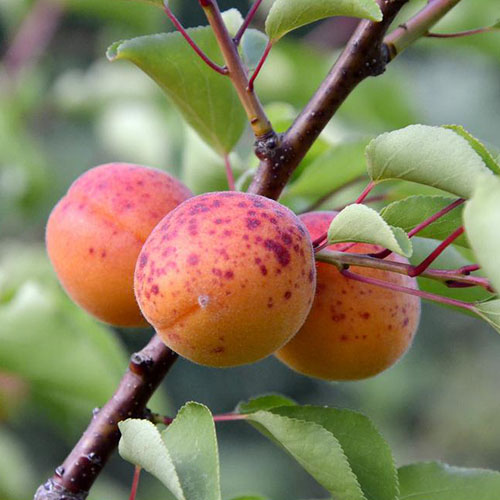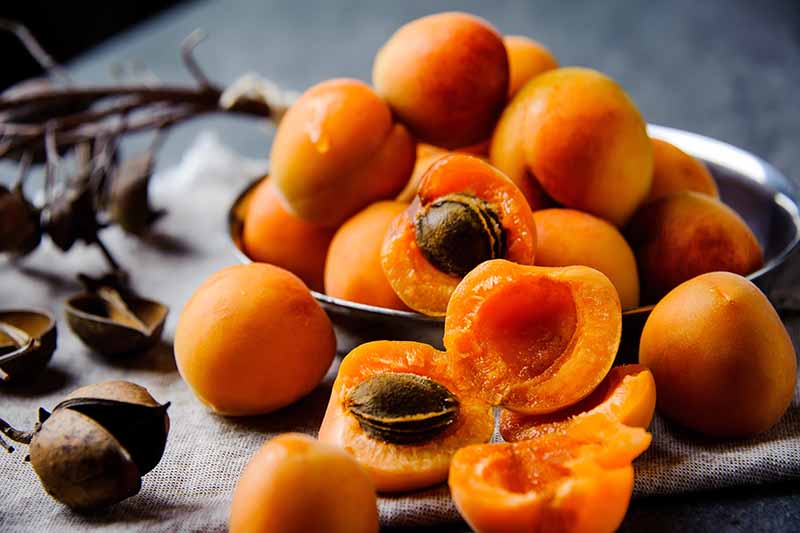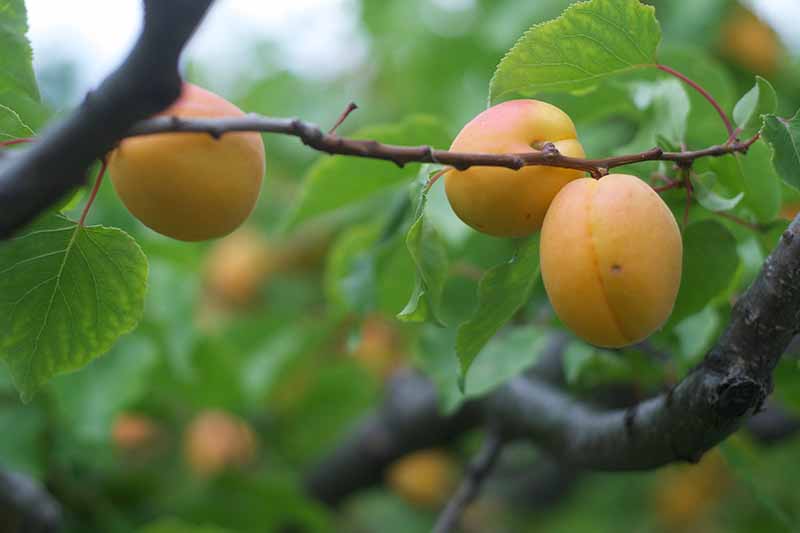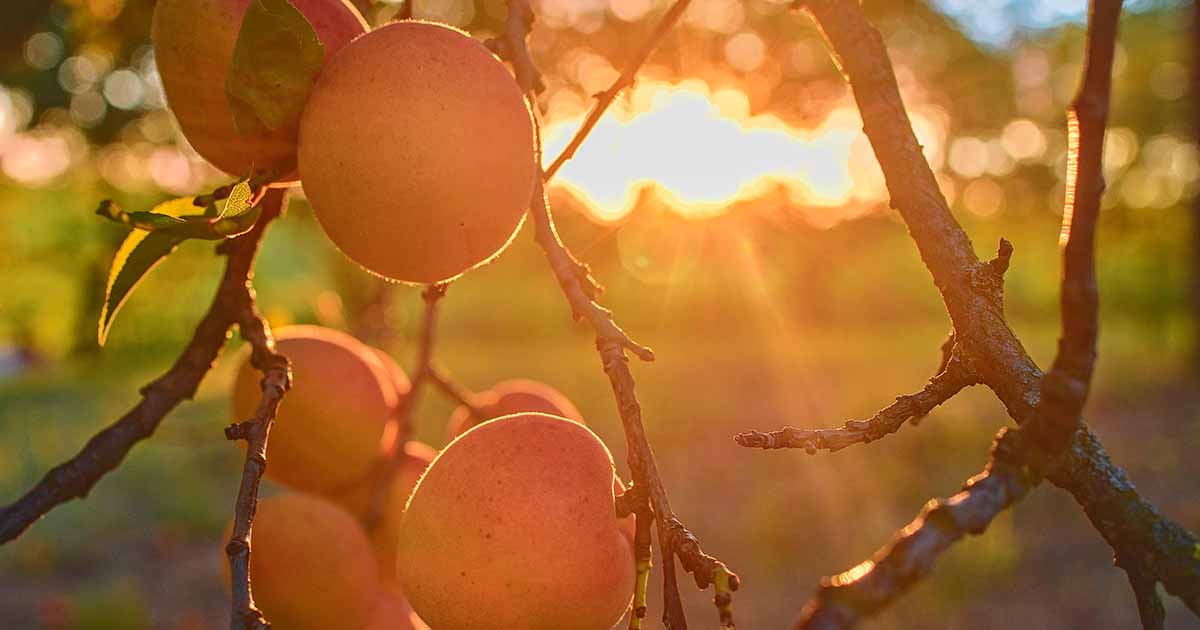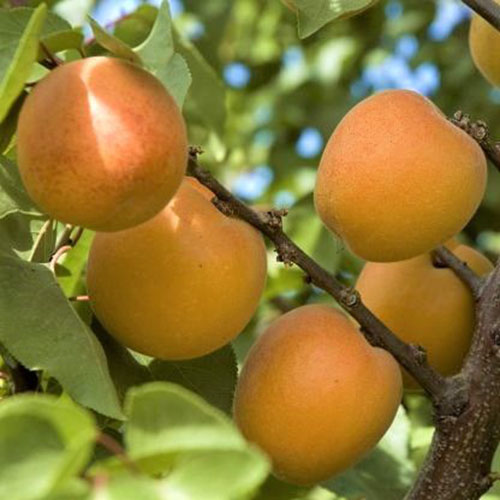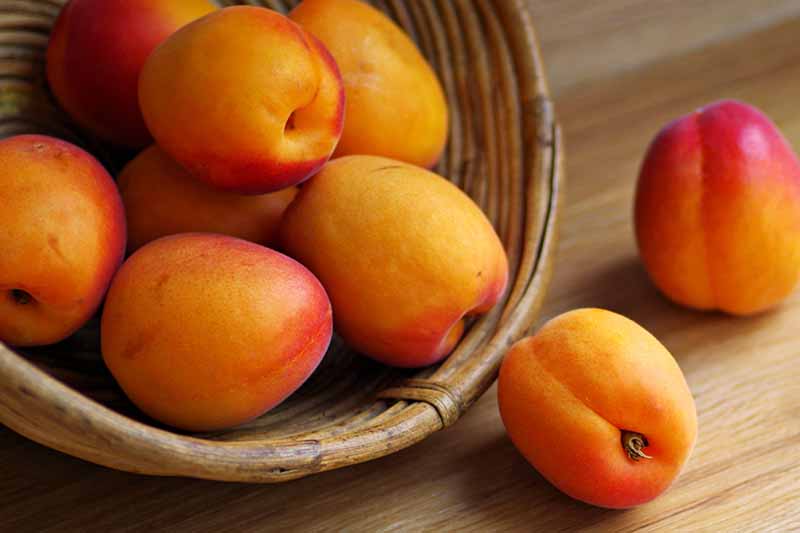Well, luckily for you, despite the challenges of your chilly northern climate, you can indeed grow these lush, sweet, and tart stone fruit in your own orchard. If you pick the right variety. There are a number of different cold hardy apricot trees available, and you can ensure a bountiful harvest if you choose the right cultivars for your growing Zone and take a few extra measures to protect your trees. I’ll lead you through the process. We link to vendors to help you find relevant products. If you buy from one of our links, we may earn a commission.
Tips for Growing Apricots In Cold Regions
Most apricot trees are hardy to USDA Zones 5-8 but will fail to set fruit if exposed to a late frost. Before you decide on the best variety for your home orchard, it will be helpful to take a crash course in how to grow apricot trees in cold, northern regions.
Know Your Chill Hours
Many fruit trees require a cold season period of dormancy in order to produce fruit – apricot trees included. More specifically, they require a certain number of total hours of temperatures between 32-45°F throughout winter, numbering in the hundreds. This is referred to as chill requirement or chill hours.
Varieties of apricot trees bred for long winters will have higher chill numbers (over 800), while those bred for short winters will have lower numbers (300, for instance). The chill requirement for any given variety is usually provided by the nursery selling the tree. But how do you determine how many chill hours you get in your location? You can check with your local extension agent who should be able to provide you with this number, but there is also a handy way to do this online. Mississippi State University developed a chill hours calculator that makes it easy to calculate this number for any location in the US. To use this calculator, first look up the call numbers for your local weather station, choose your dates (I like to use the beginning of September through the end of May for my Zone 5 homestead), plug your information in, and wait patiently for the calculator to spit out your chill hours.
Compare the number of chill hours between 32-45°F your location receives with the numbers required by the variety of tree you’re considering. Choose from those varieties whose chill requirements come close to matching your chill hours. These numbers don’t have to match exactly, but you’ll want them to be fairly close. It’s recommended to select a cultivar with a chill requirement of approximately 10-20 percent less than your average.
Plan for Late Frosts
Once you pick appropriate varieties based on chill hours, you’ll still have to be wary of late frosts, the bane of northern gardeners everywhere. Warm days in early spring can signal apricot trees to wake up from their dormant state and start sending energy into bud production. And then along comes a night in June where the temperature dips into the 20’s and bam, your buds are all gone. No apricots this year!
To prevent this from happening you have a few options:
Plant your apricot trees with a northern orientation. This will keep the soil cooler in early spring, and the tree will not wake up from its dormancy as early. Your tree will set bud later, and the late blossoms will have a better chance of turning into sweet, luscious fruit.
Or, choose an eastern orientation for planting your tree. This is the opposite strategy from planting with a northern orientation. When you plant stone fruit with an eastern exposure, the trees will receive the warming rays of the sun earlier on cold spring days. And according to Dr. Leonard Perry, the extension professor at the University of Vermont, this can potentially prevent frost from damaging the buds.
Mulch the soil around your tree. This technique will help to keep your soil cool in the spring in order to prevent your tree from waking up out of its dormant state prematurely. To do this, spread a ring of mulch, such as woodchip, bark, or straw about 4 feet around the tree – just remember to leave a few inches of bare ground around the base of the tree to protect the trunk from rot and rodent damage. As the tree grows, spread the mulch to cover the ground all the way to the tree’s drip line.
Choose late-blooming varieties. Some apricot cultivars have been specially bred to bloom later in spring than others. These varieties won’t be as likely to waken from dormancy during the first warm days of spring. The most important step in ensuring a successful apricot harvest in colder regions is to plant late blooming varieties.
Cold Tolerant Varieties to Choose
While there are a surprising number of apricot cultivars that have been bred to thrive in climates with long, cold winters, not all of them are able to produce fruit in the chilly climes of Zone 4, where average low temperatures reach between -25°F and -30°F. I singled out seven varieties that should prove to be champions for those of us where winter still comes with snow and icicles, and where the specter of a late June frost is always lurking.
1. Canadian White Blenheim
Producing apricots so good that they win in taste test trials, ‘Canadian White Blenheim’ is recommended for Zones 4-7 and has a chill requirement of 700 hours. This cultivar is a late bloomer, with fruits ripening in late summer.
It is partially self-pollinating, and will produce heavier crops when planted near another late-blooming variety. The tree produces medium to large freestone fruits that are juicy and firm. As its name suggests, inside of its golden orange skin, the fruit contains white flesh that is syrupy sweet.
‘Canadian White Blenheim’ Apricots from this cultivar are great for baking, eating fresh, canning, and drying. ‘Canadian White Blenheim’ bare root trees are available at Burpee.
2. Chinese
Considered semi-dwarf, the ‘Chinese’ apricot is a self-pollinating variety hardy in Zones 4-7 and has a 700-hour chill requirement. Also known as ‘Mormon’ apricot, it’s a late bloomer that produces heavy, midsummer harvests.
Fruits are small to medium and orange-skinned with a red blush. ‘Chinese’ apricot’s smooth, firm, juicy, orange flesh is generally freestone and has a sweet, mild taste.
‘Chinese’ ‘Chinese’ apricots are good for baking, fresh eating, canning, and drying. And as a bonus, these fruits develop sweet, edible pits that you can eat like almonds. You’ll find 4-5 foot potted ‘Chinese’ apricot trees available for purchase at Nature Hills Nursery.
3. Goldcot
Bred for Michigan’s cold winters, the ‘Goldcot’ cultivar is perfect for Zones 4-8 and has a high chill requirement of 800 chill hours. Another late bloomer and heavy producer, this self-pollinator’s fruits will ripen in midsummer.
‘Goldcot’ fruits are medium to large, and round shaped. They have golden yellow skin with red speckles and firm, juicy, orange flesh.
‘Goldcot’ The freestone fruits have a deep, tangy-sweet flavor, making them great for canning, drying, baking, or enjoying fresh. This dwarf ‘Goldcot’ tree is perfect for smaller spaces, reaching only 8 feet tall at maturity, and is available as a bare root tree from Home Depot.
4. Moorpark
‘Moorpark,’ sometimes known as ‘Moor Park’ was apparently one of Thomas Jefferson’s favorites. Named after the Moor Park estate in England, this heirloom cultivar is self-pollinating and requires 600-700 chill hours.
‘Moorpark’ ‘Moorpark’ will produce large, golden-yellow freestone fruits with deep yellow to orange flesh. Sweet and juicy, they are ideal for eating fresh, and for use in baking, cooking, and drying. You can find 2 year old dwarf ‘Moorpark’ apricot trees available at Home Depot.
5. Puget Gold
Originating from the Pacific Northwest, ‘Puget Gold’ is a cultivar that will thrive in Zones 4-9, requiring 600 chill hours. This self-pollinating variety blooms late and will produce a prolific harvest in very late summer.
‘Puget Gold’ produces freestone fruits that are large and elongated with orange skin. Their orange flesh is dense and has a classic apricot flavor that is sweet and low in acid. ‘Puget Gold’ ‘Puget Gold’ apricots are excellent for fresh eating, canning, and drying.
6. Tilton
‘Tilton’ is a cold hardy variety and grows well in Zones 4-9, needing 600 chill hours, and is self-fertile. ‘Tilton’ is a late bloomer that will produce a heavy crop late in the summer.
‘Tilton’ produces large heart-shaped fruits that have golden skin with a red blush, and contain firm, golden flesh. ‘Tilton’ is touted as one of the tastiest apricots out there with a distinctive sweet and tart flavor, and a tender, juicy texture. ‘Tilton’ This freestone cultivar is considered one of the best for canning, drying, and freezing, or for simply eating out of hand.
7. Tomcot
Developed in the Pacific Northwest as an early producer, ‘Tomcot’ will thrive in Zones 4-8. This cultivar has a chill requirement of 500-600 hours and is partially self-pollinating. It will be a more vigorous producer if another variety is planted nearby.
Unlike the other varieties presented here, ‘Tomcot’ is an early bloomer. However, it is also a long bloomer, meaning that even in the event of a late frost, some flower buds are likely to survive and produce fruit. Its blooms are also somewhat frost tolerant. With ‘Tomcot,’ the advantage of the early bloom is an early harvest.
‘Tomcot’ ‘Tomcot’ produces large, firm fruits with light orange, glossy skin that blushes in the sun. The sweet orange flesh is freestone and slightly tart in flavor. The apricots are good for eating out of hand and for baking. If ‘Tomcot’ sounds like the right variety for you, you’ll find 4-5 foot tall potted plants at Nature Hills.
Quick Reference Comparison Table
Chill Out With Your Apricots
Once you have chilled with your apricots over the winter and then experienced the sweet thrill of a bountiful crop in the summer, carefully selecting the right variety will seem well worth the effort. And even if your tree doesn’t produce every year, it will be worth it for the odd summer that you do receive a bumper crop.
Have you tried any of these varieties in your northern orchard? If so, let us know in the comments. And if you find that your thoughts keep drifting to your orchard, you’ll find more guidance on growing stone fruit right here:
Give the Gift of Fruit: How to Grow Peach Trees How to Grow and Care for Fruiting Cherry Trees How to Prevent and Control Armillaria Root Rot on Apricots
© Ask the Experts, LLC. ALL RIGHTS RESERVED. See our TOS for more details. Originally published on January 15, 2020. [lastupdated]. Product photos via Bob Wells Nursery, Burpee, Home Depot, and Online Orchards. Uncredited photos: Shutterstock.


